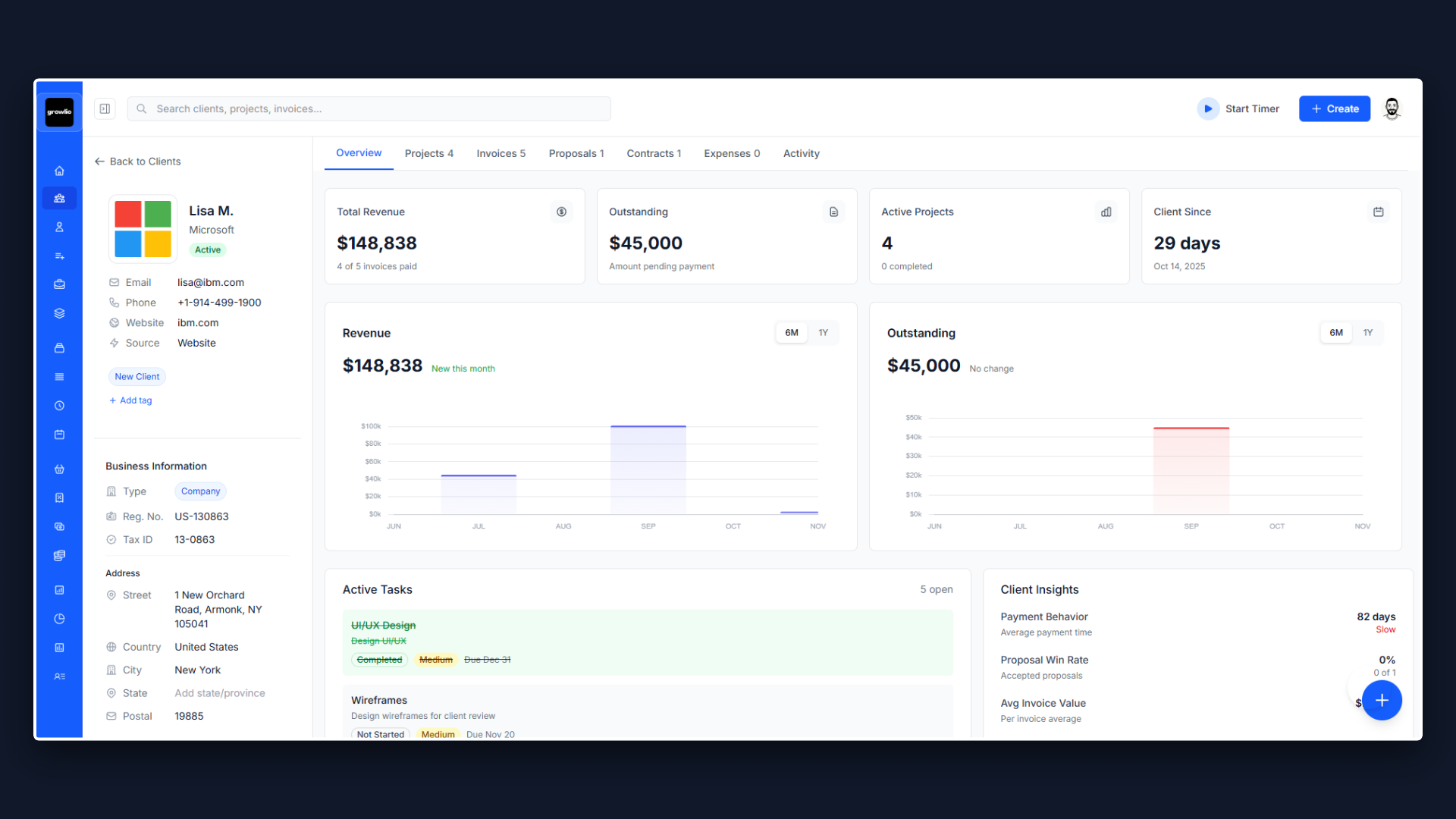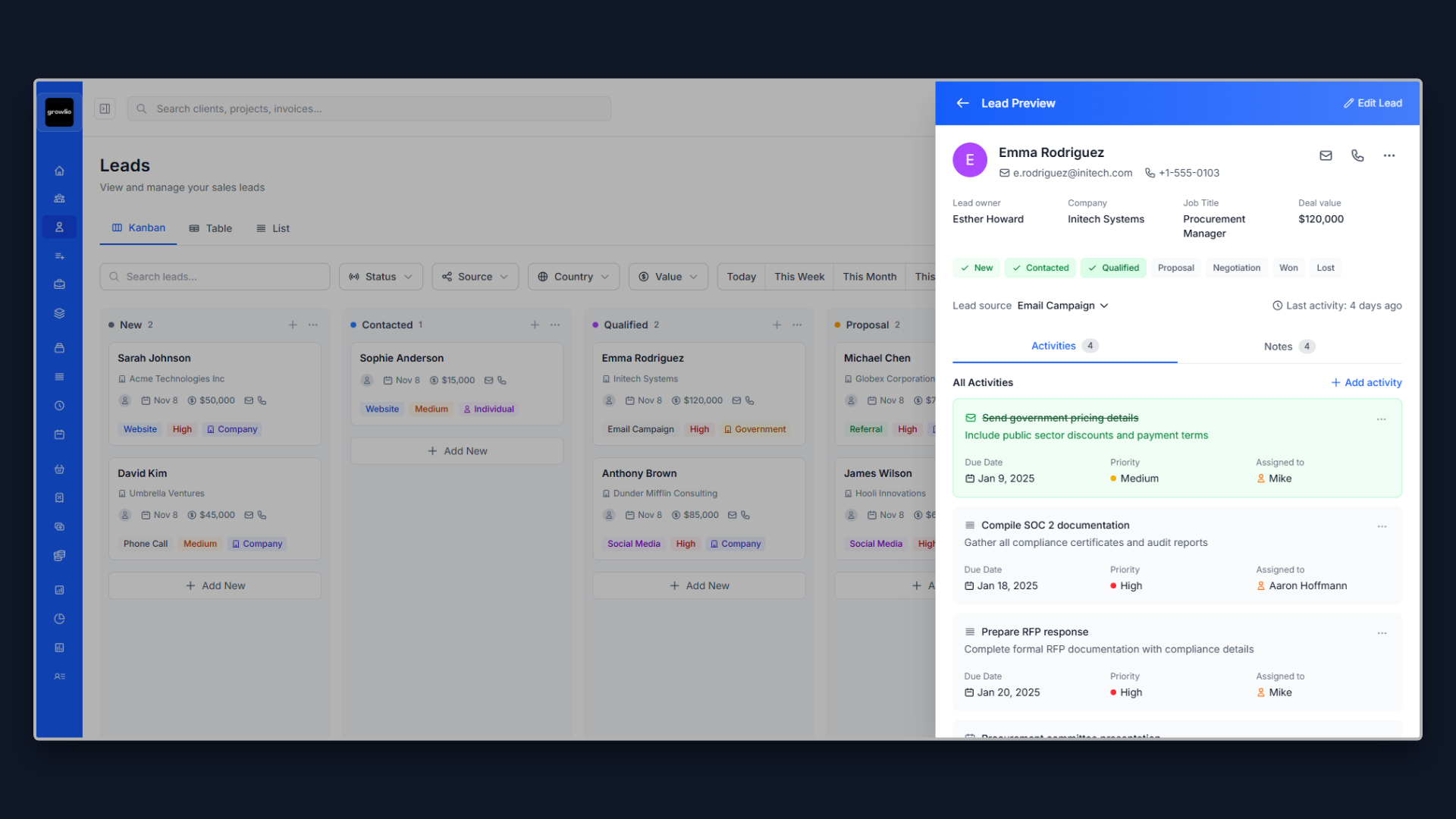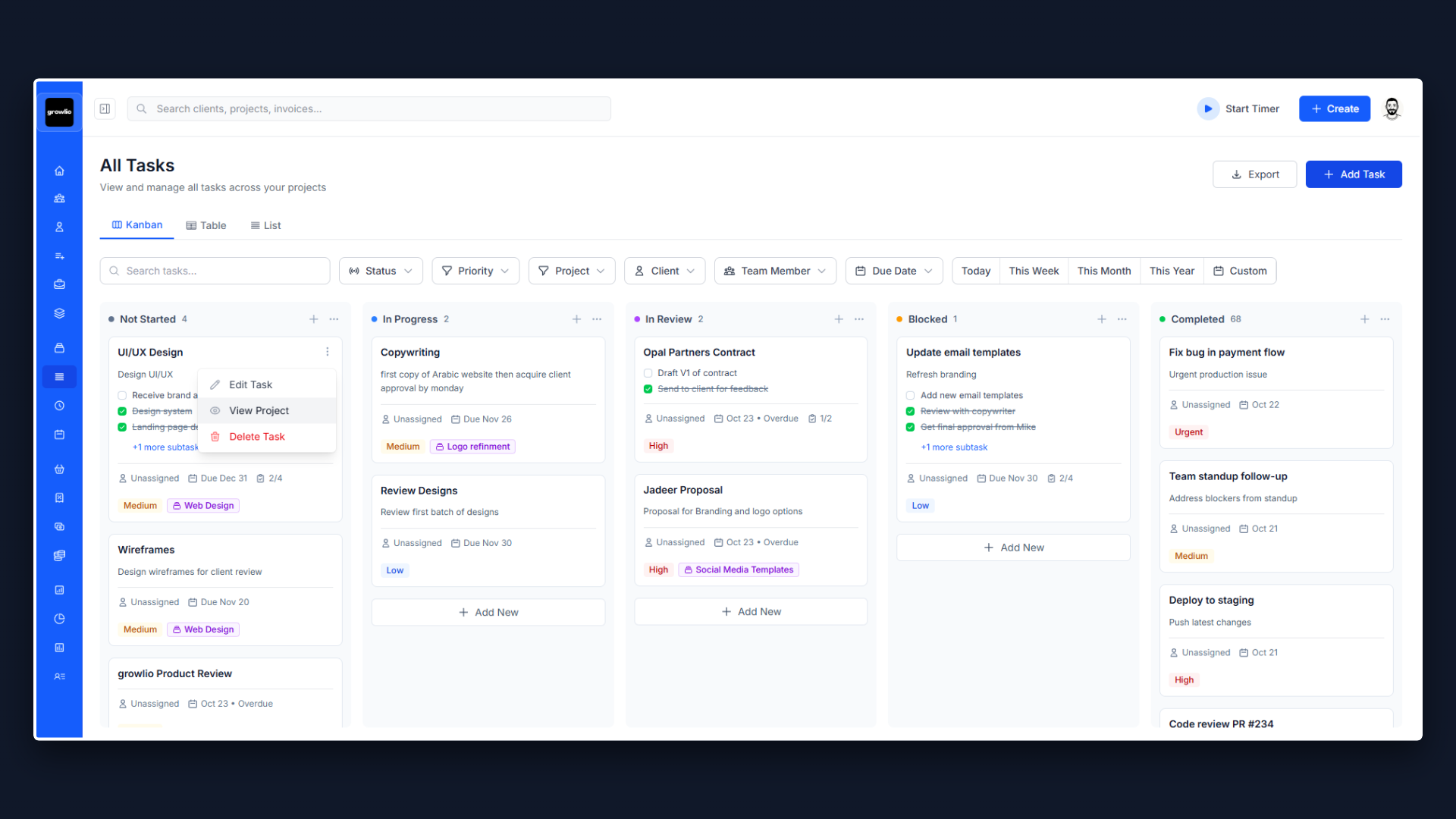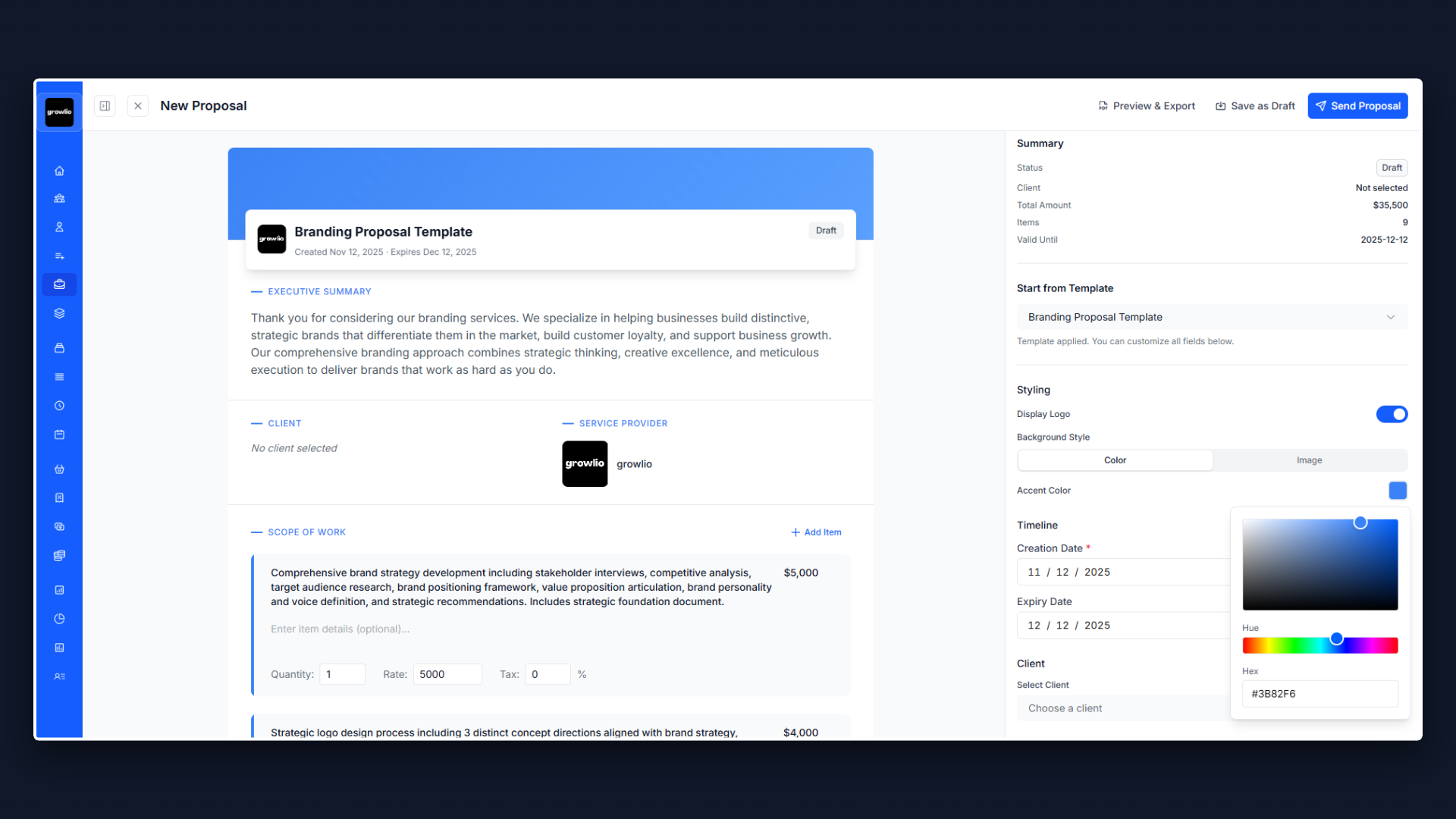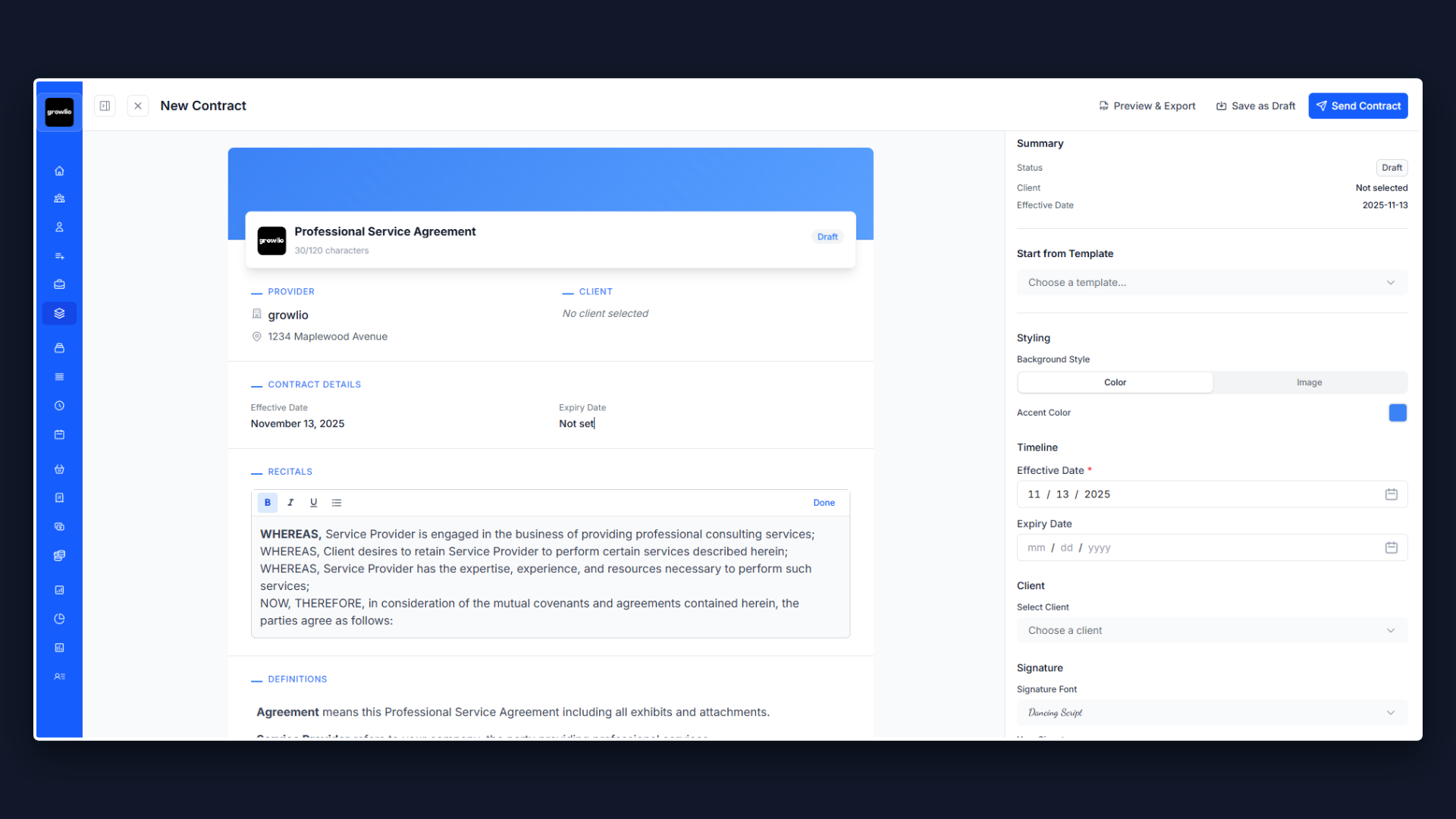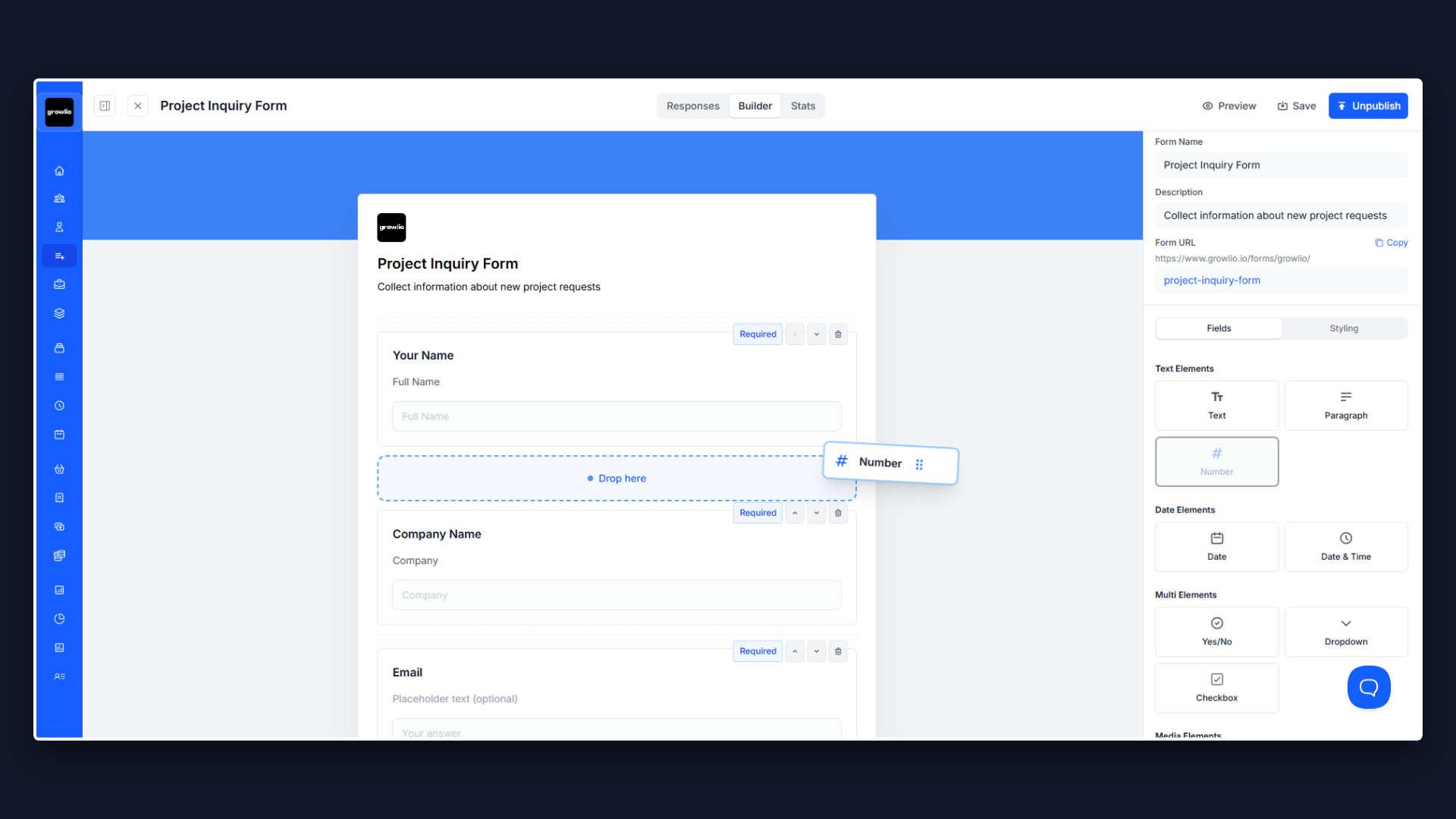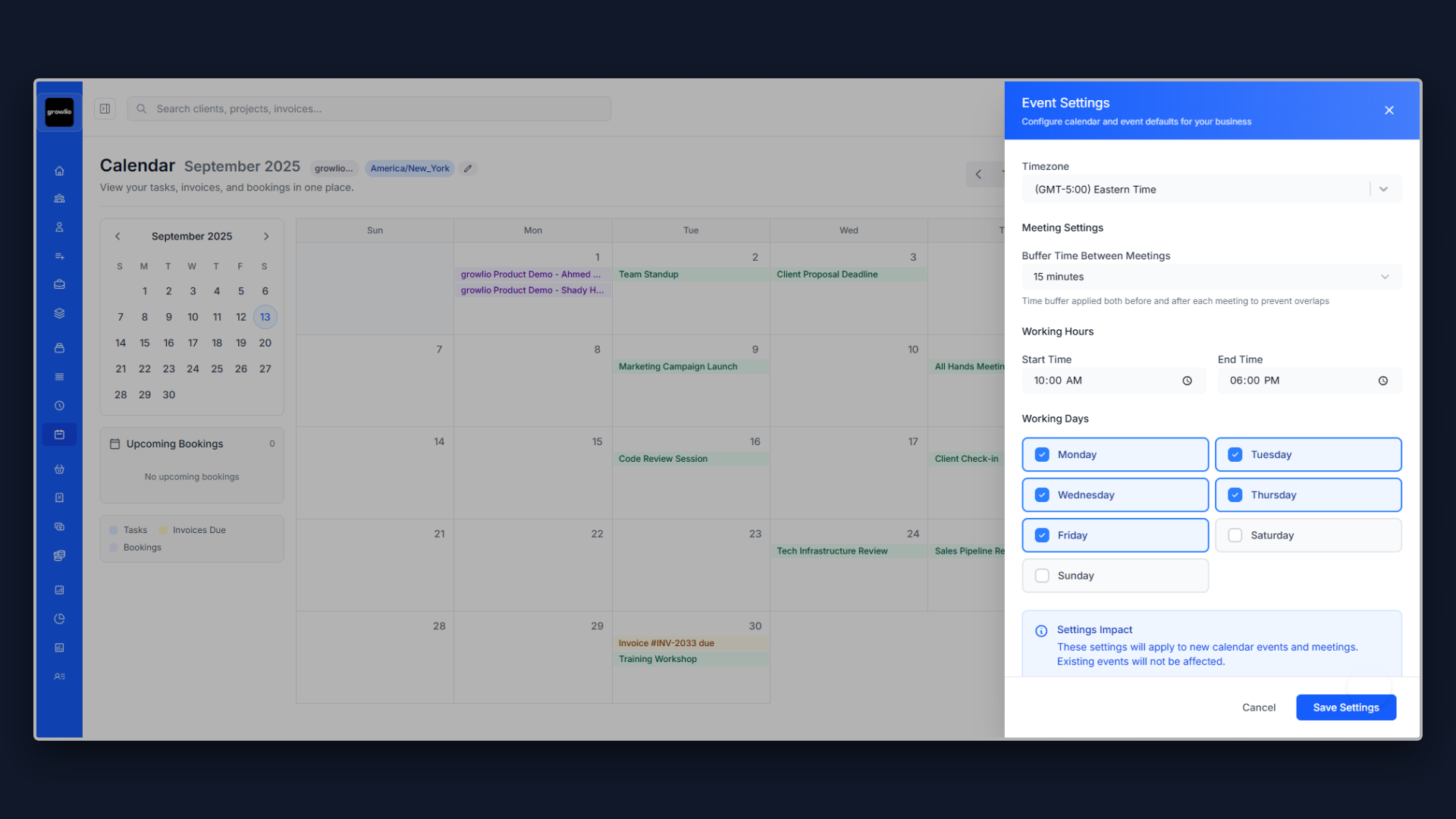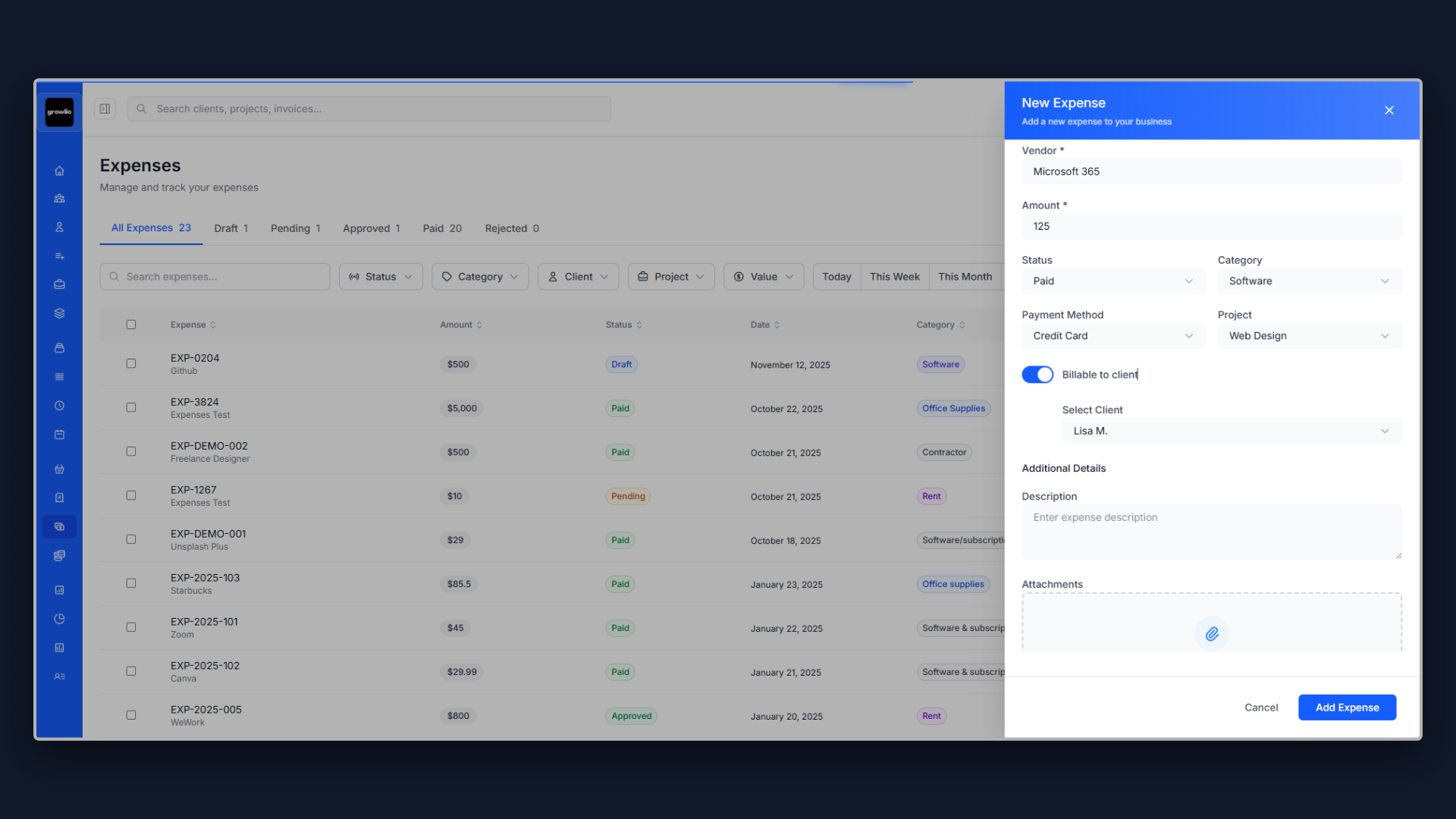Why Your E-commerce Website Proposal Makes or Breaks Your Business
Here is what most e-commerce developers get wrong: they lead with platform features, payment gateways, and shopping cart functionality. They talk about Shopify vs WooCommerce, SSL certificates, and inventory management before understanding what the client actually wants to sell and to whom.
The result? Proposals that read like technical specifications. Clients cannot differentiate between developers because everyone lists the same features. Price becomes the only decision factor. Projects launch without clear success metrics. And six months later, the beautiful store you built has disappointing sales because the foundation was never properly planned.
A professional e-commerce website proposal does something different: it demonstrates you understand the unique challenges of online retail while setting realistic expectations about what drives e-commerce success. It educates clients that building the store is just the beginning, and the real work is driving traffic and converting visitors into customers.
This template gives you the exact framework to create proposals that win e-commerce projects at profitable rates while setting realistic expectations for online store success from day one.
1. Start With Their Business Model, Not Your Technical Capabilities
Before discussing platforms, payment gateways, or shopping cart features, understand their e-commerce business model. Are they selling physical products that require shipping and inventory management? Digital products with instant delivery? Subscription boxes with recurring billing? Services with booking calendars? Dropshipping with supplier integrations?
Your proposal should demonstrate you understand their specific situation. A fashion boutique selling 200 SKUs has different needs than a digital course creator. A B2B wholesale operation requires different functionality than a direct-to-consumer brand. A single-product store needs a different approach than a multi-category marketplace.
Start by addressing their business goals: projected revenue targets, average order value expectations, target customer demographics, competitive landscape, and growth plans. This proves you are not just building a store, you are building their revenue engine.
2. Platform Selection Based on Their Needs, Not Your Preference
One of the most critical decisions is e-commerce platform selection. Your proposal should clearly articulate why you are recommending a specific platform for their situation, not just defaulting to what you know best.
Shopify excels for merchants who want hosted simplicity, quick launch timelines, extensive app ecosystem, built-in payment processing, minimal technical maintenance, and predictable monthly costs. It is ideal for small to mid-sized stores focused on selling rather than technical management.
WooCommerce (WordPress) works well for businesses wanting complete control, existing WordPress sites adding e-commerce, unlimited customization capability, no transaction fees, and integration with complex content strategies. Best for businesses with technical resources or developer relationships.
BigCommerce serves growing merchants needing built-in advanced features, multi-channel selling capabilities, no transaction fees, robust API for custom development, and room to scale. Good for businesses outgrowing Shopify but not ready for enterprise platforms.
Custom platforms make sense for unique business models that existing platforms cannot support, complex B2B requirements, integration with legacy systems, or very high-volume operations needing maximum performance control.
Explain your recommendation honestly. Admit trade-offs. This transparency builds trust and sets appropriate expectations about capabilities, costs, and limitations.
3. Payment Processing and Transaction Fee Transparency
Payment processing seems straightforward until clients see their first merchant statement and realize how much they are paying in fees. Your proposal must address this clearly to prevent future frustration.
Explain the complete fee structure: credit card processing fees (typically 2.9% plus 30 cents per transaction), platform transaction fees if applicable, payment gateway fees, currency conversion fees for international sales, chargeback fees and dispute costs, and monthly gateway fees.
For example, a Shopify store using Shopify Payments avoids transaction fees but pays standard credit card processing. The same store using a third-party gateway pays credit card processing plus 0.5-2% transaction fees to Shopify. These percentages add up quickly at scale.
Recommend payment gateway options with honest pros and cons: Shopify Payments (simplest but Shopify-only), Stripe (developer-friendly, great API), PayPal (customer recognition but higher fees), Square (if also doing in-person sales), and Authorize.net (established but older technology). Also address alternative payment methods: Apple Pay, Google Pay, buy now pay later options like Affirm or Klarna, and cryptocurrency if relevant to their market.
4. Shopping Experience and Conversion Optimization
A beautiful store that does not convert visitors into customers is an expensive failure. Your proposal should address conversion optimization from the start, not as an afterthought.
Detail your approach to high-converting product pages: professional product photography requirements, compelling product descriptions that sell benefits, clear pricing and shipping information, trust signals like reviews and guarantees, prominent call-to-action buttons, mobile-optimized layouts, and fast page load times.
Address the checkout experience specifically. Cart abandonment averages 70% across e-commerce, often due to poor checkout experiences. Explain how you will minimize friction: guest checkout option, progress indicators, multiple payment methods, saved address auto-fill, transparent shipping costs upfront, security badges and SSL indicators, and mobile-optimized checkout flow.
Also discuss post-purchase experience: order confirmation emails, shipping notifications with tracking, delivery confirmations, review request automation, and abandoned cart recovery emails. These automated touchpoints dramatically impact customer lifetime value.
5. Product Management and Inventory Systems
Product and inventory management complexity varies dramatically based on business model. Your proposal should address their specific requirements.
For physical product businesses, discuss inventory tracking and low-stock alerts, variant management (sizes, colors, materials), SKU organization and management, supplier management and purchase orders, warehouse or multi-location inventory, barcode scanning and fulfillment tools, and integration with shipping carriers.
For businesses with complex catalogs, address bulk product import/export, category and collection organization, product filtering and search functionality, related product recommendations, product bundles and kits, and custom product fields for specifications.
Be clear about what is included in standard platform functionality versus what requires custom development or third-party apps. Clients often assume capabilities that require additional investment.
6. Shipping Configuration and Fulfillment Strategy
Shipping strategy significantly impacts profitability and customer satisfaction. Your proposal should address this critical component thoroughly.
Discuss shipping rate calculation options: flat rate shipping (simple but may lose money on heavy items or long distances), real-time carrier rates (accurate but more complex), free shipping thresholds (drives higher order values), local pickup or delivery options, and international shipping considerations.
Address carrier integrations: USPS, UPS, FedEx, DHL for international, regional carriers for specific markets, and shipping aggregators like ShipStation or ShipBob for multi-carrier management.
For businesses scaling quickly, discuss fulfillment options: self-fulfillment (most control, most work), third-party logistics (3PL) integration, dropshipping automation, and print-on-demand services. Each has different technical requirements and integration needs.
Also address shipping protection, returns management, and international customs documentation. These operational details often get overlooked until they become problems.
7. Security, Compliance, and Trust Signals
E-commerce security is not optional. Your proposal must demonstrate you take it seriously and will implement proper protections.
Detail your security measures: SSL certificate implementation for encrypted transactions, PCI DSS compliance for payment processing, secure hosting environment, regular security updates and patches, strong password requirements, two-factor authentication for admin access, and regular backup systems.
Address legal compliance requirements: privacy policy and terms of service, GDPR compliance for European customers, CCPA compliance for California customers, ADA accessibility compliance, sales tax collection and remittance, age verification for restricted products, and shipping restrictions for regulated items.
Discuss trust signals you will implement: customer reviews and ratings, trust badges (SSL, payment processors, certifications), money-back guarantees, return policy clarity, contact information visibility, about page with company story, and social proof (customer count, years in business).
These elements dramatically impact conversion rates. Customers will not buy if they do not trust the store.
8. Marketing Integration and Traffic Strategy
The most common mistake new e-commerce store owners make is assuming customers will magically appear once the store launches. Your proposal should address traffic and marketing proactively.
Discuss marketing platform integrations you will implement: Google Analytics for traffic and conversion tracking, Facebook Pixel for social advertising, Google Ads conversion tracking, email marketing platform integration (Klaviyo, Mailchimp), SMS marketing tools, affiliate program software, and influencer collaboration platforms.
Address on-site marketing features: email capture popups and forms, promotional banner capabilities, discount code system, product badges (new, sale, bestseller), related product recommendations, upsell and cross-sell functionality, and customer account wishlists.
Be clear about what you provide (technical implementation) versus what they need to handle (strategy, content creation, ad management). Many clients assume you are also providing marketing services unless explicitly stated otherwise.
Consider recommending a launch marketing budget: if they are spending $20,000 on store development but $0 on launch marketing, set expectations that initial sales may be slow until they invest in customer acquisition.
9. Mobile Commerce and App Considerations
Mobile commerce now represents over 70% of e-commerce traffic. Your proposal must address mobile experience as a primary concern, not an afterthought.
Detail your mobile optimization approach: fully responsive design across all devices, mobile-optimized product images and galleries, touch-friendly navigation and buttons, simplified mobile checkout, mobile wallet support (Apple Pay, Google Pay), and fast mobile page load speeds.
For brands with significant mobile audiences, discuss progressive web app (PWA) capabilities or native mobile app development. PWAs offer app-like experiences through browsers without app store approval or downloads. Native apps provide ultimate control but require significant additional investment.
Address mobile-specific features: push notifications for abandoned carts or promotions, mobile app loyalty programs, in-app exclusive products or pricing, barcode scanning for product lookup, and augmented reality product visualization for applicable categories like furniture or fashion.
Test mobile experience thoroughly and include mobile conversion optimization in your ongoing strategy, not just mobile compatibility.
10. Analytics, Reporting, and Success Metrics
E-commerce success is measurable. Your proposal should establish clear metrics and reporting from the start.
Define key performance indicators you will track: total revenue and revenue trends, conversion rate (visitors to customers), average order value, customer acquisition cost, customer lifetime value, cart abandonment rate, traffic sources and channel performance, product performance and bestsellers, and return/refund rate.
Explain reporting you will provide: Google Analytics setup and training, e-commerce platform native analytics, custom dashboard creation, monthly performance reports, and recommendations based on data.
Set realistic benchmarks based on industry standards: average e-commerce conversion rate is 2-3%, average order value varies by industry, customer acquisition cost must be below customer lifetime value for profitability. These benchmarks help clients understand whether their store is performing well or needs optimization.
Also discuss how you will use data to drive improvements: A/B testing for product pages and checkout, cohort analysis for customer retention, funnel analysis to identify drop-off points, and heat mapping for user behavior insights.
11. Timeline and Launch Strategy
E-commerce projects are more complex than brochure websites. Your timeline should reflect this reality and account for all the moving parts.
A typical e-commerce website timeline includes discovery and planning (2-3 weeks covering business model analysis, platform selection, feature requirements, design direction), design and client review (3-4 weeks for homepage, product pages, checkout flow, and responsive designs), development and configuration (4-6 weeks for theme development, payment integration, shipping setup, product import, testing), content and product setup (2-4 weeks for product photography, descriptions, pricing, inventory setup), testing and optimization (2-3 weeks for functionality testing, payment testing, mobile testing, load testing), and training and launch (1-2 weeks for admin training, marketing setup, soft launch, official launch).
Total timeline typically ranges from 10-16 weeks depending on complexity, product count, and custom requirements. Building a 50-product store is very different from a 5,000-product catalog.
Address what can delay projects: product photography not ready, product information incomplete, payment gateway approval delays, client feedback delays, scope changes during development. Set clear expectations about client responsibilities and how delays impact timeline.
12. Ongoing Support, Maintenance, and Growth
E-commerce stores require ongoing attention unlike static websites. Your proposal should address post-launch support clearly.
Discuss maintenance requirements: platform and plugin updates, security patches, payment gateway updates, SSL certificate renewal, backup management, and performance monitoring.
Address ongoing optimization services: conversion rate optimization, A/B testing, new feature implementation, seasonal promotions setup, new product category development, and marketing integration additions.
Explain support options: hourly on-demand support, monthly retainer packages, dedicated account management, or complete transition to client management with training.
Also discuss growth planning: when to add features like subscriptions, wholesale portal, multi-currency support, or international expansion. Starting simple and adding complexity based on real business performance is smarter than over-building upfront.
Set expectations that successful e-commerce requires ongoing investment in optimization, marketing, and feature development. The launch is just the beginning.
